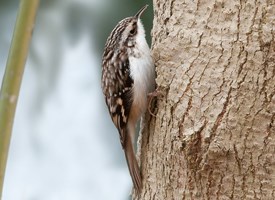This post is a cross between What is Hugelkultur? and What is having a natural yard like? It is That Blog’s first photo-essay.
In this essay, the goal is to build a sun trap. A sun trap is a warm, sunny microclimate. In this case, the chosen site is a south-facing slope: it is sunny most of the day. A Hugelkultur bed along the north and east sides will protect the site from wind.
The first step is to cover the site for about six months, to kill whatever is already growing there. Old carpet makes great sheet mulch.
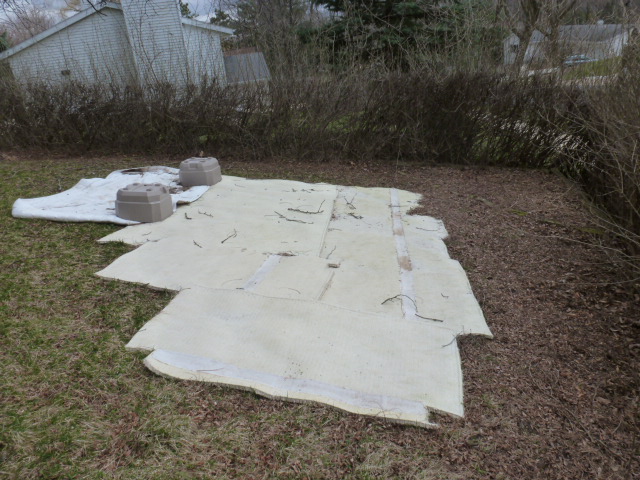
Next, use a length of rope to mark the outline of the work area.
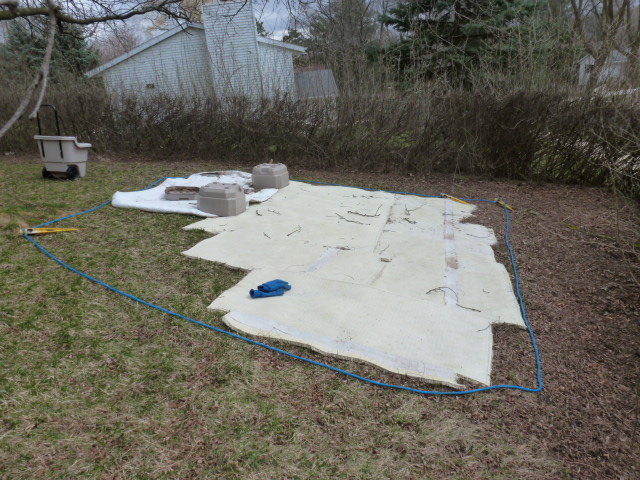
Build the Hugelkultur bed from old wood. Stuff the cracks with leaves, plants and sod dug out of the work area, and other organic material. Add water. Make the pile bigger than it needs to be, because it will shrink a lot as it decomposes.
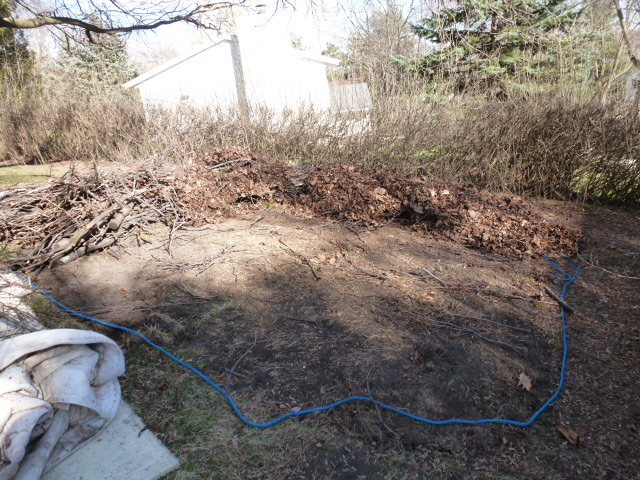
Clear the old plants from the sun trap area. If it’s small, this can be done with hand tools. If it’s larger, a sod stripper may be appropriate technology. Spread clean soil over the area.
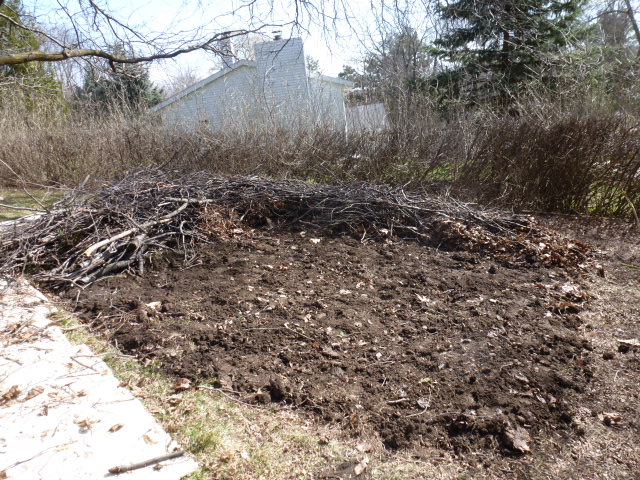
Cover the Hugelkultur bed with mulch. Replace the sheet mulch until it is time to add plants to the sun trap. For this project, the prepared site will be left to settle for a little while before new plants are added.
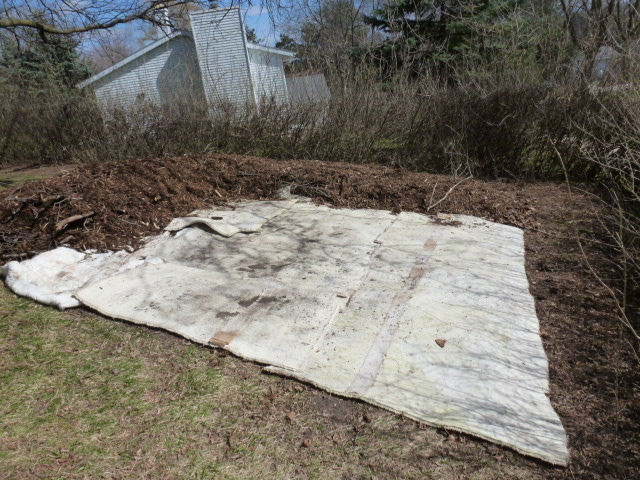
This project took approximately ten hours over three days. All tools and materials were already onsite, except for the cart in the second picture.
